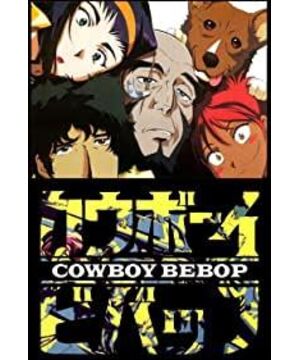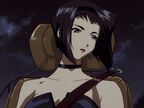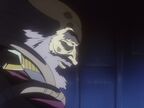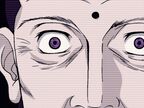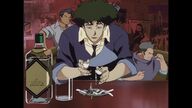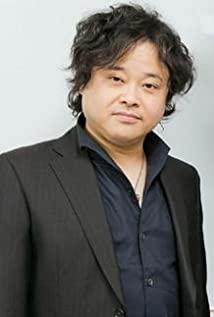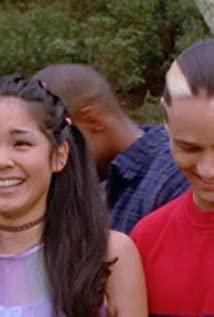This article was originally published on my public account " Refrigerator on Bebop ", welcome to follow
“A long time ago, in Harlem, New York in 1941, there was a bar called the Minton Club. The open-ended stage welcomes anyone to show their talents, so it attracts many young jazz musicians here. , to make friends with music. These young souls are tired of the clichés of traditional jazz, and finally create a new style to express their uninhibited true colors... In the vast starry sea of 2071, there is also a gathering of bounty hunters On the 'Bebop' spaceship, the heart is longing for freedom and not afraid of any danger. They will bring out the old and bring us a fantastic visual experience that we have never seen before. And this film that has created a new style, also Hence the name... Cowboy Bebop.'"
——The first sentence of the first chapter of "Cowboy Bebop"
its name
Compared with the translated name of "Cowboy Bebop", the Japanese and English name "Cowboy Bebop" of this film is really strange in style. Words that don't go together are really confusing at first glance. Fortunately, it is never a new thing for film and television animation works to be named after music. "Requiem for Dreams", "Symphonic Psalms"... In most cases, the content of these works and music are often not much related. , the choice of a musical term is more just to take its analogous effect on the conveyed emotion. But that doesn't apply to Cowboy Bebop. Named after "Bebop Jazz", this series of films about the joys and sorrows of a group of bounty hunters wandering in the solar system is not the head of either production company Sunrise (Sunrise) or director Shinichiro Watanabe. Came for nothing. As for why, let's start with what "bebop" is.
Jazz was born in New Orleans in the late 19th and early 20th centuries, and was deeply influenced by blues, Ragtime and other African-American music in style. In the following decades, this musical form continued to develop and mature, and gradually merged with music from various countries, regions and folklore, creating a series of derivative styles, such as big band, swing, bib Pop, Cool, etc. Among them, bibop jazz emerged in the 1940s. Compared with the early traditional jazz, this style is more free in creation and expression, with more improvisation, faster rhythm and more complex harmonic structure. A bebop piece usually begins with an ensemble main melody, followed by an impromptu solo for each instrument, before all the instruments return to the main melody and add a rest to the whole piece.
Written here, perhaps attentive readers have found that this performance form of Bebop jazz is echoing the story line of the entire play of "Cowboy Bebop": from the memories of Spike, Julia, and Vessias' entanglement as the running through. The main theme of the series begins; after that, the different styles of the various episodes are like kaleidoscopic improvisational solos of sub-instruments, unfolding the stories of each member of the Bebop, and uncovering their unknown past little by little; the final melody returns to Spike's main story, and draws an end to the whole series. As for the five most common pieces that make up the Bebop band, they also seem to have subtle similarities with the five members on the Bebop: the delicate and flexible saxophone corresponds to Spike's dashing figure; The trumpet of energy is like the lively and free Fei; the double bass plucks that rarely dominate the scene but the finishing touch is the knife-mouthed tofu-hearted Jett who silently supports the other members; the jumping piano constantly wanders between harmony and melody. In time, it corresponds to the quirky hacker girl Ed; As for the human corgi, Ai Yin, although it seems insignificant, it affects the rhythm of the development of the story again and again, naturally it is the drum. From this point of view, if the "Cowboy" in the title implies the connection between the protagonists' identities as bounty hunters and the cowboys in old western movies, then "Bebop" points out that the film revolves around the main line. A narrative rhythm that unfolds but remains true to its roots and a freehand style of improvisation. It is precisely because of this that the title formed by the combination of these two terms with different styles has become the most appropriate summary of the film from the story to the art form.
With the precedent of the title, the director applied this style to each specific episode. The title of each story in the play actually pays homage to a certain classic song or a (branch) famous singer (band), for example: the fifth chapter "Ballad of Fallen Angels" Ballad)" pays homage to Aerosmith's song "Fallen Angels"; Episode 8 "Waltz for Venus" pays homage to Bill Evans' jazz song "Waltz for Venus" Debby (Debby Waltz)"; the fourteenth "Bohemian Rhapsody (Bohemian Rhapsody)" is a direct reference to the Queen's classic of the same name. I will expand on this in a later episode of the song review.
Of course, the relationship between "Cowboy Bebop" and Bebop or music is by no means limited to the characters in the play, the setting of the story, or the musical eggs hidden in the title of each episode. The soundtrack in the play is an auditory feast that combines various Western styles of music including jazz, rock, folk, and classical. To be able to mix these many different styles of music together without showing the slightest incongruity, Yoko Kanno has contributed greatly to the composition.
Yoko Kanno and Seatbelt
The name of Yoko Kanno (菅野よう子 Kanno Yoko) is probably familiar to everyone who is familiar with anime. From the jazz of "Cowboy Bebop" to the symphony of "∀ Gundam" to the electronic music of "Ghost in the Shell", this versatile man can navigate a variety of styles that are as far apart as possible.
Yoko Kanno, who received music training since childhood, dropped out of Waseda University early to devote herself to the music business. She first debuted as a keyboard player in the band Tetsu100% formed by Toru Sugihara. After the band disbanded, she joined the famous game company Glorious, and contributed to classics including "Romance of the Three Kingdoms", "The Age of Voyage" and "Nobunaga's Ambition" Original soundtrack for the series. But what really made her famous in the composition world was the original soundtrack created for "Macross Plus" co-directed by Masaharu Kawamori and Shinichiro Watanabe in 1994. It is also because of the cooperation in this work that she and Shinichiro Watanabe have forged an indissoluble bond, and they have joined forces this time in "Cowboy Bebop". There are even rumors that during the production of this film, Watanabe even modified the plot to match the song made by Kanno.
If you pay close attention to the credits for the opening credits of "Cowboy Bebop", you may notice that a new band called "Seatbelts" participated in the sound recording of the film. This can't help but make people puzzled. This band has never appeared or recorded in any public occasions or in the media before. He De He Neng can be seen by Yoko Kanno to produce the original sound for this drama as soon as he debuted. ? In fact, the band never really existed until the film was put into production, a phantom band formed by Yoko Kanno for Cowboy Bebop. The name "seat belt" is said to be used to imply that the band's performance is too free and wanton, and seat belts need to be fastened to prevent danger. This international "band" is composed of musicians from Japan, New York, and Paris. It has covered all the soundtracks of "Cowboy Bebop" from TV animations to theatrical movies to video games. A live concert was held in the name of Seat Belts. Seatbelts officially disbanded in 2004 after producing the soundtrack album for the Sony PS2 game Cowboy Planet: Nocturne of Remembrance.
In terms of the composition of the band's instruments, the "Seat Belt" band is very close to the "Big Band Jazz (Big Band)". This style, which emerged in the 1920s and 1930s, usually has more than 10 musicians who play plural trumpets, trombones and saxophones in the brass department, as well as piano, drums, guitar, double bass (or Bass) such rhythm instruments. On this basis, the "Seat Belt" band has added strings, harmonica, African tambourines, and electronic synthesizers that are more local customs or modern pop and electronic music instruments. This also allows them to incorporate a variety of elements including electronic, rock, hip-hop, folk, blues, country, and classical in the original sound of "Cowboy Bebop".
Tank!
Now that we have talked about the "Seat Belt" band and their preparation in the style of "Big Band Jazz", we have to mention one of the several "Big Band"-style soundtracks in this play, and also the most popular opening song "Tank! ".
To create a successful film and television opening song, I think there are three essential elements: 1. An ear-grabbing melody - most audiences have not received systematic musical training, too complex texture and harmony The sound will make the music lose its affinity, and naturally it is not far from being skipped by fast forward; 2. It fits the main style of the film and creates an atmosphere for the feature film - this is not difficult to understand, it is a heart-pounding urban love story with gold The sound of the iron symphony, or the sound of the splendid silk and bamboo for a magnificent epic, I am afraid that the scenery will be bad before the feature film is completed, and the heroic spirit will be short; 3. The unique opening animation/editing that matches the music— -If the theme song summarizes the main style of the film in terms of atmosphere and emotion, the title animation or editing will be a high-level summary of the visual perception of the film. Only when the two complement each other can firmly grasp the audience's eyes and keep them from the screen for a moment. , waiting with bated breath for the upcoming feature film. I secretly think that the title of "Tank!" has achieved a situation that few people can surpass in these three points.
Let’s start with the melody and atmosphere. The animation of “Cowboy Bebop” selected the first half of the whole song of “Tank!” (deleting the second repetition of the first theme) as the title. The melody of this part is straightforward and concise. Accompanied by the band playing the same tone or chord in unison to highlight the distinct main melody, it is unforgettable, and it has a classic "big band jazz" legacy. The whole piece begins with a group of powerful high-speed double-pitched staccato in unison in the brass section, and the deafening strong sound grabs the attention of all the audience tightly in their palms. In the introductory part, the double bass and rhythm guitar strums fill the mood with a rhythmic rhythm, followed by the fast and jumping drum beat of the African drum that drives the audience's body to sway gently, like a cannonball. The unstoppable rhythm and progression complement the protagonists' smooth gunfights and aerobatics scenes in the feature film. At this point, the magnetic male voice of Tim Jensen (Tim Jensen, one of the lyricists of the original soundtrack of the "Cowboy Planet" series) said like a spell: "3, 2, 1, Let's s Jam! (3, 2, 1, let's play!)", the first theme of the saxophone unison sounded in an instant, illuminating the entire stage like a sudden burst of light. The theme of the set is very tense in emotion and rhythm, which makes people think of the soundtracks of classic spy films such as "007" and "Mission Impossible". After the transitional section, the first theme was played in unison again led by the trumpet. Different from the previous saxophone's very rhythmic and infectious interpretation, the trumpet's sound was more enthusiastic and explosive, like a saxophone that broke through difficulties and obstacles. The protagonists are generally normal, further promoting the atmosphere. At this time, the melody suddenly changed in style, introducing a melodious saxophone interlude with an exotic style, and began to accumulate strength for the third appearance of the first theme. The first theme that sounded for the third time It further introduces "Call and Response" from black traditional music. After each saxophone and other wind instruments are played in unison, the trumpet will insert an echo-like variation, pushing the whole piece between questions and answers. The climax is reached. As of this point, the "Big Band" style TV title "Tank!" has come to an end, with a trumpet overblown leading all the instruments to play a glissando and then playing in unison to end the whole song, The white-on-black title on the screen heralds the end of the mood-boosting warm-up and the beginning of the main feature. But in fact, the coolest part is just about to begin for the full version, which only appears on the soundtrack CD. In the following sections, the piece is no longer tied to the "big band" style of following the score or the time constraints of the opening animation, and instead introduces a saxophone riff played by Masato Honda. Solo. When both the brass and rhythm sections are repeating the same harmony as the previous section, an alto saxophone drags the tune that seems to be inexhaustible and incessant, playing a rhythm like an old-fashioned orchestra colleague. The first theme variation of Qiujie has the free and uninhibited spirit advocated by "Bebop", echoing the name of the film "Bebop", and also analogous to the different protagonists on the "Bebop". It is a style of behavior limited by conventions. In the end, the whole band played the first theme in unison for the fourth time under the guidance of saxophone, and pushed the whole song to the top while returning to the main melody. Superfluid unison draws a rest. Honda) improvised saxophone solo. When the brass section and the rhythm section are repeating the same harmony as the previous section, a tenor saxophone drags the tune that seems to be inexhaustible and incessant, and plays the convolution knot like an old-fashioned orchestra colleague. The first theme variation of "Bebop" has the free and uninhibited spirit advocated by "Bebop". restricted behavior. In the end, the whole band played the first theme in unison for the fourth time under the guidance of the saxophone, and pushed the whole song to the top while returning to the main melody. Finally, in the same way as the TV opening, a series of glissandos was used to draw a rest in unison. Honda) improvised saxophone solo. When the brass section and the rhythm section are repeating the same harmony as the previous section, a tenor saxophone drags the tune that seems to be inexhaustible and incessant, and plays the convolution knot like an old-fashioned orchestra colleague. The first theme variation of "Bebop" has the free and uninhibited spirit advocated by "Bebop". restricted behavior. In the end, the whole band played the first theme in unison for the fourth time under the guidance of the saxophone, and pushed the whole song to the top while returning to the main melody. Finally, in the same way as the TV opening, a series of glissandos was used to draw a rest in unison.
In terms of visual effects, this title uses a lot of retro elements to match the jazz soundtrack and the ubiquitous tribute elements in the film. Among them, the elements that bear the brunt of the first generation of the classic "Lupin III" series title, from the individual image details of each character (Spike's smoke, Sword Rain II; Fei's high heels and red-tailed angel fighter; Jett's double head shark; and Ed's goggles), to the montages of characters running, chasing, and fighting driving, all revealing the lighthearted atmosphere of the playful banter in the opening titles of this animated series that has survived more than 40 years. A tribute to the unstoppable rhythm. Another element that has to be mentioned are the silhouettes heavily used in the opening sequences of 1960s espionage and crime films (such as "The Thomas Crown Affair", "Billion Dollar Brain"), and Contrast between black background and bright color blocks. Through the effect of contrasting colors, it not only brings a strong visual impact, but also highlights the cool images of the protagonists and puts a layer of mysterious color on them.
Well, now the musicians are ready and the curtain has been raised, 3, 2, 1, Let's Jam!
View more about Cowboy Bebop reviews


